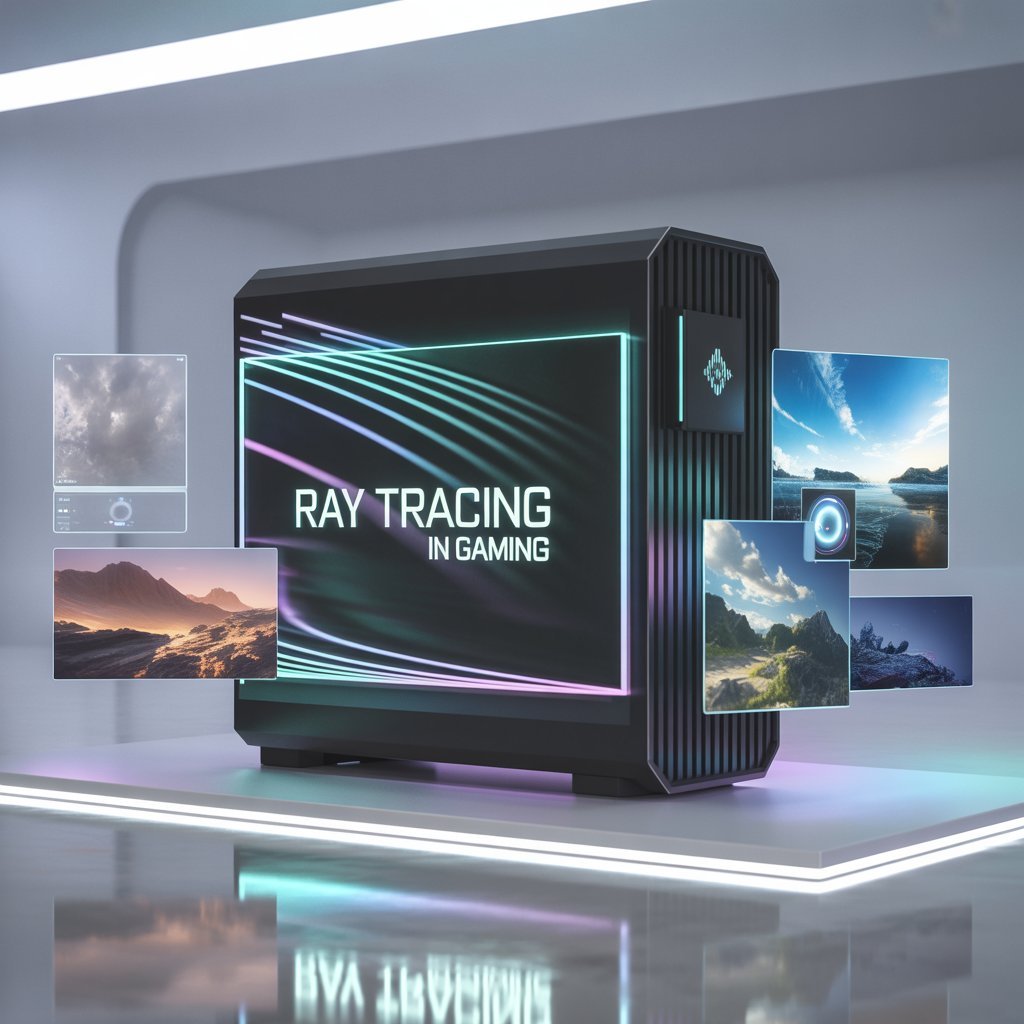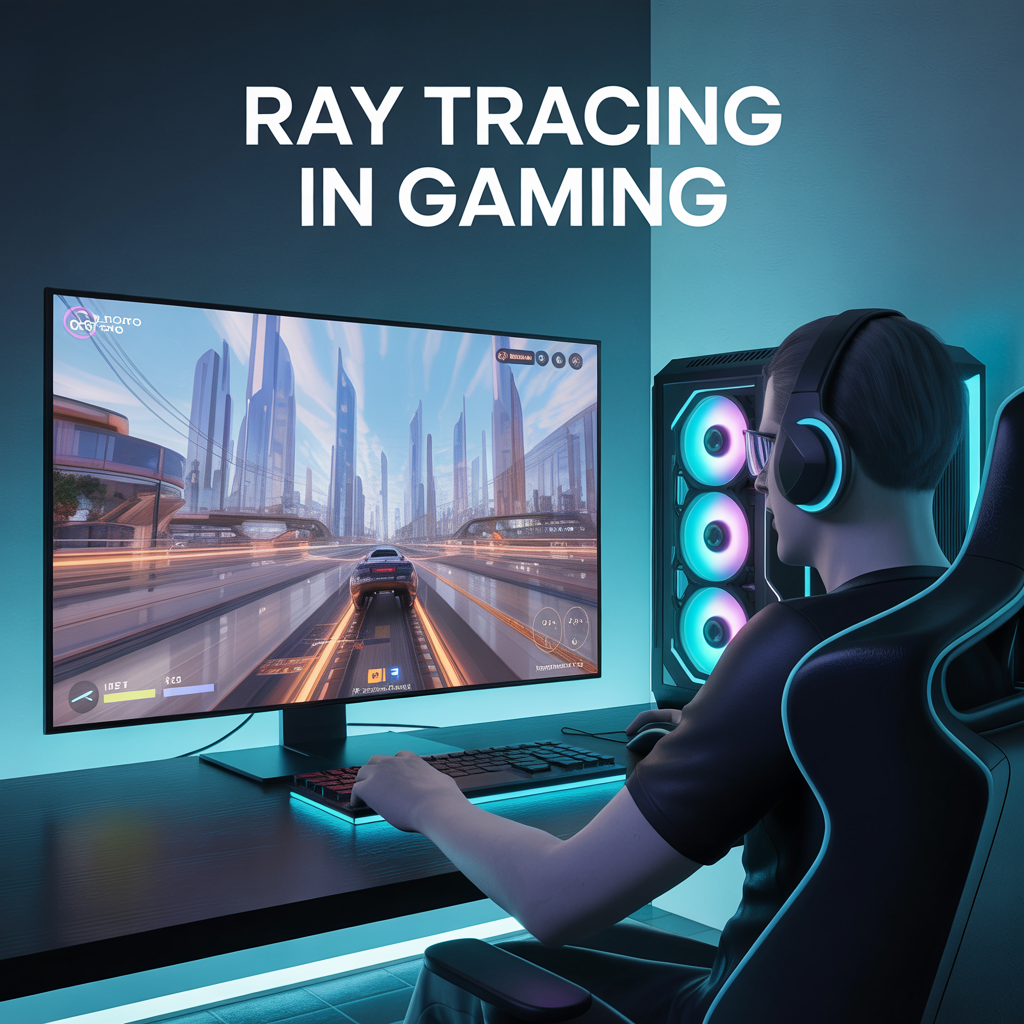Ray Tracing Technology is redefining what’s visually possible in modern video games. Once limited to high-end animation and cinematic effects, this breakthrough tech has now entered the gaming world—and it’s transforming everything from lighting to reflections. As developers push the boundaries of realism, ray tracing is fast becoming the gold standard for next-gen visuals.
Table of Contents
1. Unmatched Realism in Lighting and Shadows
Traditional lighting in games relies on clever tricks to fake realism. But ray tracing simulates actual light behavior—how it reflects, refracts, and interacts with surfaces. The result? Dynamic shadows, lifelike environments, and scenes that feel like you’re stepping into a Hollywood blockbuster.
2. Ultra-Realistic Reflections and Mirrors
Say goodbye to low-res, blurry reflections. With ray tracing, reflective surfaces—like water, glass, and metal—react in real time to characters, movement, and lighting. Whether it’s a character’s armor glinting under torchlight or a skyline mirrored on a wet road, the immersion is next-level.
3. Immersive Environments Like Never Before
When lighting behaves realistically, entire environments transform. Think eerie glow in haunted houses, flickering neon signs in cyberpunk cities, or sunsets casting long shadows across ancient ruins. Ray tracing adds a cinematic layer that makes every location feel alive.
4. Enhanced Depth and Visual Fidelity
Ray tracing improves how your eyes perceive depth and space. Subtle details like ambient occlusion (how light dims in corners or under objects) bring a new dimension of realism. It’s not just about graphics—it’s about feeling the space around your character.
5. Future-Ready Gaming Engines
Big-name engines like Unreal Engine 5 and Unity are integrating ray tracing as a standard. This means developers are building games from the ground up with ray tracing in mind—expect more titles with native support, smoother optimization, and even better graphics.
6. Next-Gen Hardware Support
Ray tracing once required industrial-grade GPUs. Now, with NVIDIA RTX, AMD RDNA2, and Intel Arc GPUs, this tech is becoming accessible to the average gamer. Even consoles like PlayStation 5 and Xbox Series X support ray tracing, bringing it to the living room.
7. A Glimpse into the Metaverse and Beyond
As we edge closer to fully immersive experiences like the Metaverse, ray tracing will play a vital role. Whether it’s gaming, VR, or virtual social platforms, this tech will ensure digital worlds look and feel as real as the physical one.

Final Thoughts: Are You Ready for the Future?
Ray tracing isn’t just a buzzword—it’s a game-changing leap toward the future of immersive entertainment. From indie games to triple-A titles, its influence is already being felt—and it’s only going to grow.
Frequently Asked Questions (FAQ)
Q1. What is ray tracing in gaming?
A: Ray tracing is a rendering technique that simulates how light interacts with objects in a game environment. It creates realistic lighting, shadows, and reflections by mimicking the actual behavior of light rays, resulting in highly immersive and lifelike visuals.
Q2. How does ray tracing improve gaming graphics?
A: Ray tracing enhances graphics by providing more natural lighting, accurate shadows, lifelike reflections, and depth perception. It eliminates the need for visual shortcuts like fake lighting and makes environments feel cinematic and realistic.
Q3. Do I need a special graphics card for ray tracing?
A: Yes, to experience real-time ray tracing, you need a compatible GPU such as NVIDIA RTX series, AMD Radeon RX 6000 series or higher, or Intel Arc graphics cards. Many next-gen consoles also support ray tracing.
Q4. Can ray tracing affect game performance?
A: Ray tracing is resource-intensive and can impact frame rates, especially on older hardware. However, technologies like DLSS (Deep Learning Super Sampling) and FSR (FidelityFX Super Resolution) help balance visual quality with performance.
Q5. Which games support ray tracing?
A: Many modern games support ray tracing, including titles like Cyberpunk 2077, Minecraft RTX, Control, Call of Duty: Modern Warfare, and Metro Exodus. The list is growing as developers adopt the technology.
Q6. Is ray tracing worth it for casual gamers?
A: If you’re into stunning visuals and immersive gameplay, ray tracing is a fantastic upgrade. However, casual gamers focused more on gameplay than graphics might prioritize performance over visual fidelity unless they have high-end hardware.
Q7. Will ray tracing become standard in future games?
A: Yes, as hardware becomes more powerful and affordable, ray tracing is expected to become a standard feature in next-gen games and engines. Developers are already optimizing for it in upcoming releases.

